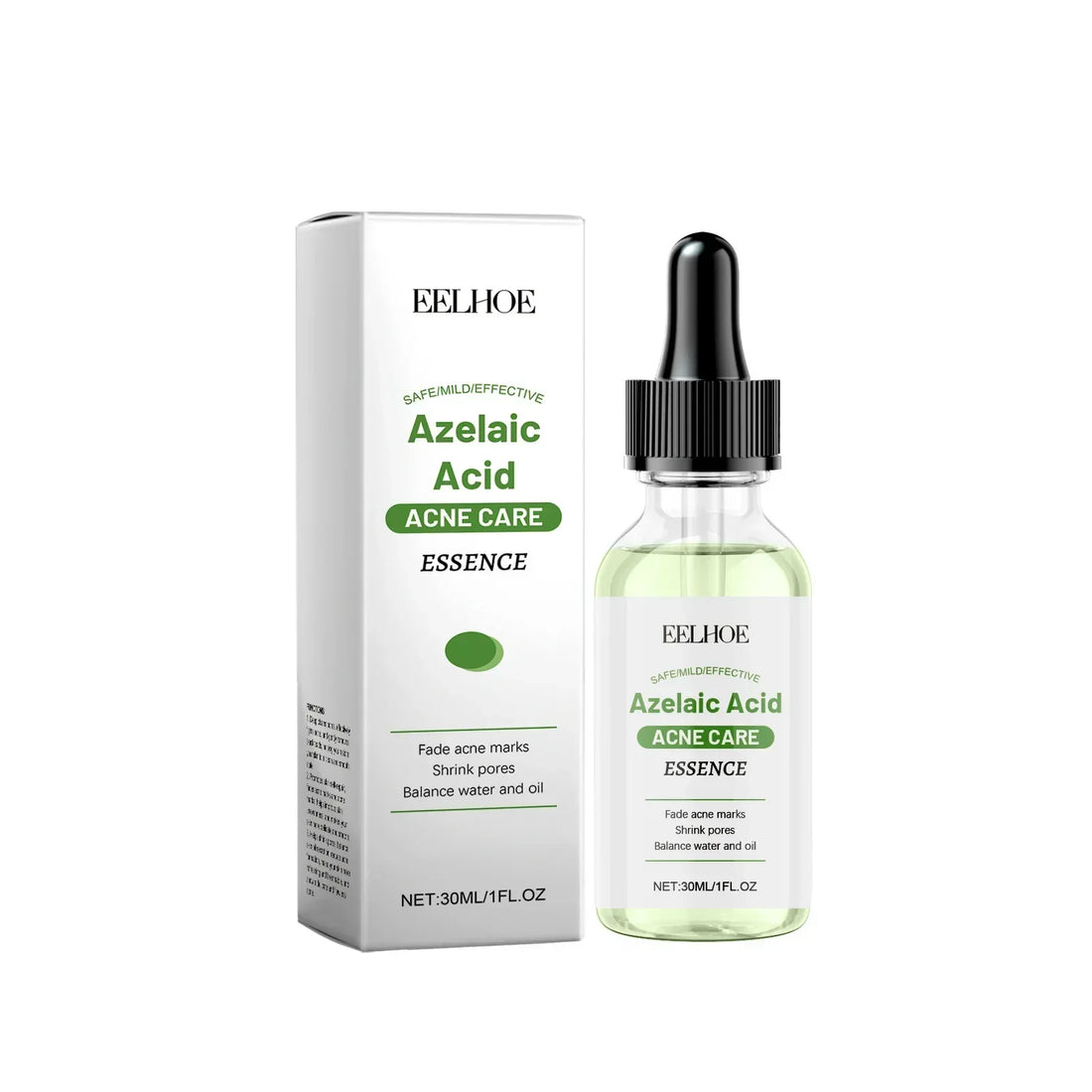
What is azelaic acid? And does it work?
Share
What is azelaic acid? And does it work?
Azelaic acid has become a popular ingredient in skincare in recent years—especially for those looking to treat acne, rosacea, hyperpigmentation, and sensitive skin. But what exactly is azelaic acid, how does it work, and is it something you should consider adding to your skincare routine?
Azelaic acid is a dicarboxylic acid that occurs naturally in cereals such as wheat, rye and barley. In skin care, it is used synthetically in concentrations between 10 and 20 percent. It is an active ingredient that is particularly appreciated for its versatility and gentleness. Azelaic acid is anti-inflammatory, antibacterial and has a mild exfoliating effect. This makes it suitable for several skin conditions, not least for people with sensitive skin who otherwise have difficulty tolerating active ingredients such as retinoids or acids.
The most distinctive thing about azelaic acid is its effect on acne and rosacea . By inhibiting the growth of the bacteria Cutibacterium acnes , it reduces inflammation and helps soothe the skin. It opens up clogged pores and prevents new outbreaks from occurring. In rosacea, it reduces redness and irritation through its anti-inflammatory effect, which has led many dermatologists to recommend it as a first-line treatment. An example of a popular and effective serum with both salicylic acid and azelaic acid is our EELHOE Salicylic Acid & Azelaic Acid Serum .
Another valued property of azelaic acid is its effect on hyperpigmentation. It inhibits the enzyme tyrosinase, which is central to melanin production, allowing it to gradually lighten dark spots caused by acne, sun damage or melasma. Results don't come overnight, but with regular use, skin tone becomes more even and clearer.
What makes azelaic acid so appealing is that it is both effective and gentle. It rarely causes irritation, making it an option even for those with sensitive skin types. For those who cannot use stronger acids or active ingredients due to redness, peeling or itching, azelaic acid is a safe choice. At the same time, patience is required – the effect builds up over time and only becomes apparent after several weeks of continuous use.
How to use azelaic acid varies depending on the product formulation. It is available in creams, gels and serums, often in concentrations of 10% in over-the-counter products and 15–20% in prescription products. It can be used both morning and evening, but it is important to combine it with a moisturizer and sunscreen during the day, as the skin may become slightly more sensitive to light. For an optimal routine, it is also recommended to gently exfoliate once a week, for example with AHA 30% + BHA 2% Peeling Serum with Niacinamide & Zinc .
Side effects are uncommon but may occur, especially at the beginning of treatment. These may include mild tingling, burning or slight dryness. In most cases, these symptoms disappear after a few days or weeks of use as the skin adjusts. If irritation persists, use should be reduced to a few times a week until the skin has adjusted.
For those looking for an effective but gentle treatment for acne, age spots or rosacea, azelaic acid may be the solution. It also works great as a complement to other active ingredients. For example, many people combine azelaic acid with niacinamide or salicylic acid, as these ingredients enhance each other's effects without irritating the skin. A good follow-up treatment can be a moisturizing mask, such as Sadoer Hyaluronic Acid Face Masks , which soothe and moisturize the skin after active products.
In our Shopify store, you'll find both pure azelaic acid products and combination formulas that contain azelaic acid along with other active ingredients. These are suitable for different skin types and needs – whether you're looking to treat acne, even out skin tone, or calm reactive skin.
In conclusion, azelaic acid is a versatile and effective ingredient with clinically proven efficacy against several common skin concerns. It is an excellent choice for anyone looking to improve the appearance of their skin without compromising their barrier function or resilience. With regular use and the right product selection, azelaic acid can make a big difference – both to the health and appearance of their skin.
